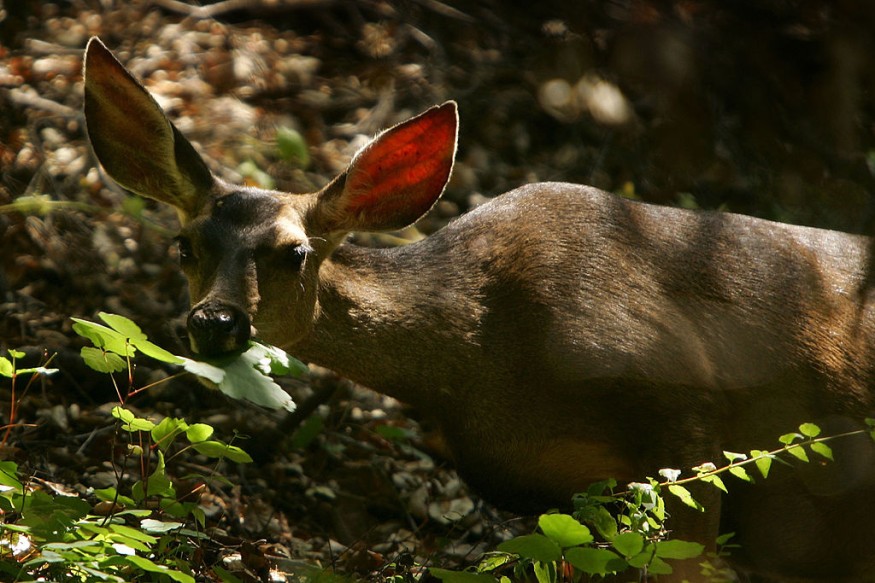A black mule deer was spotted by biologists running in the desert west of Texas, United States, according to reports. Since the majority of mule deer have a brown color, the rarity of the said animal was due to its black hair color since the deer species have an abundant population across the Western US.
Black Mule Deer

The Texas Department of Parks and Wildlife (TWPD) stated that the black mule deer is "the rarest of rare," as cited by CNN. The rare animal was seen when members of the TWPD District 1 Biologists were conducting wildlife surveys in the Trans-Pecos region.
In the Facebook video below posted by the TWPD - Trans-Pecos Wildlife District on March 30, it can be seen that the team from a helicopter saw the black mule deer which was sprinting and hopping around a mountainside.
The TWPD biologists indicated the mule deer has Melanism, which resulted in its dark appearance. The team also added that Melanism among a mule deer is considered to be rarer than the albino and piebald mule deer.
Melanism and Albinism
Melanin is an amino acid and a natural skin pigment that dictates the color of the skin, hair, and eyes of animals and people, as per WebMD. However, certain genetic mutations result in relatively few cases of skin color-altering genetic conditions called Melanism and Albinism.
According to the TWPD biologists, the animal was suffering from Melanism, which is a rare genetic anomaly that causes mutations, resulting in an increased dark pigmentation and resulting in a blackish appearance of humans and animals, notably mammals, reptiles, and insects.
Under Melanism, specific mutations in the melanocortin 1 receptor gene (MC1R) yield the excessive production of melanin. The biologists are uncertain as to how many mule deer have Melanism, but they have reportedly estimated it to be one out of every several million, as per CNN.
The opposite of Melanism is Albinism, which is a related mutation concerning the production of melanin. A person or mammal with Albinism has extremely light skin or hair. This is a result of the little amount of absence of melanin.
Albino Animal Cases
Cases of albinism among animals are considered to be rare in nature, but it is prevalent in various animal species in the land, sea, and air, as per National Geographic. Previous research has suggested that albino animals have difficulties living in the wild.
For mammals, albinism occurs when a baby inherits one or more mutated genes from its parents, causing the prohibition of melanin production. This is also the same case for humans since albinism and melanism are not only genetic conditions but also hereditary genetic disorders.
One of the most famous cases of animal albinism is the gorilla named Snowflake, who died at the Barcelona Zoo in Barcelona, Spain, in 2003. Snowflake is reportedly the planet's only known gorilla with albinism.
In Illinois, almost a hundred albino squirrels were found in the town of Olney, becoming an attraction amongst residents and a sign that albino animals can still thrive, as per National Geographic.
Related Article: The Early Death Signs of Disappearing Zebra Stripes
© 2025 NatureWorldNews.com All rights reserved. Do not reproduce without permission.




